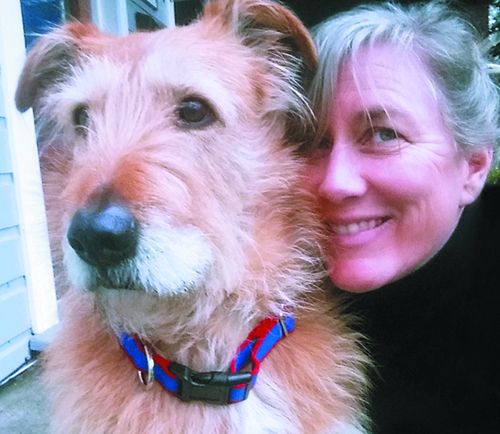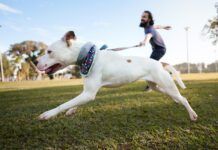I’m incredibly fortunate to have had a career that has allowed me to work from my home for the past 25 years or so. If you are new to working from home while sheltering in place (and, perhaps, also caring for children), you may be one of the thousands of people who observed that your dog was thrilled to have you home all the time. And he or she probably got more walks, too!
But as this issue goes to press, and states are beginning to reduce the sheltering in place restrictions, you may be worrying about how your dog is going to respond when you get to (have to?) go back to work or school. If this is you, we’ve got your back. Our Training Editor, Pat Miller, explains how to make sure your dog adjusts smoothly to your absence.
Food-filled Kongs and other food-dispensing toys are frequently prescribed by trainers – and, indeed, by us, too! – for helping dogs pass the time they have to spend alone. The idea is to give them something enjoyable to do, so they are less tempted to be destructive or worried about when you might return. But you should be aware that these food-filled toys and tools are not a panacea! Eileen Anderson describes some potential hazards associated with using food dispensers as dog-sitters.
I’d like to add something to the discussion. Pandemic quarantines aside, it’s always a good time to teach your dog to be comfortable and content at home without you. This goes double for newly adopted dogs and foster dogs, and it goes triple for puppies. Teaching your dog that he can relax when you leave him is a valuable life skill, and, since most of us can’t be with our dogs all day, every day – not even me, and I always work at home! – it enhances the quality of his life. You want him to feel safe and secure when you’re gone, don’t you?
I’m aware that a lot of us feel better when we’re with our dogs than when we are without them – and that some people depend on their dogs as emotional support animals. But even those people – perhaps especially those people! – should be sensitive to the idea that cultivating a dog’s emotional dependence on being with people is unfair, maybe even cruel.
I have a number of friends whose dogs suffer from separation anxiety, and that’s exactly the correct word, “suffer.” These dogs are not just uncomfortable, they are in absolute, being-branded-by-hot-coals agony when their owners leave.Their owners have spent countless hours working through training protocols meant to s-l-o-w-l-y improve the dogs’ ability to be left home alone without tearing themselves or their homes apart. Every dog owner should strive to prevent this traumatic disorder from developing if they possibly can.






